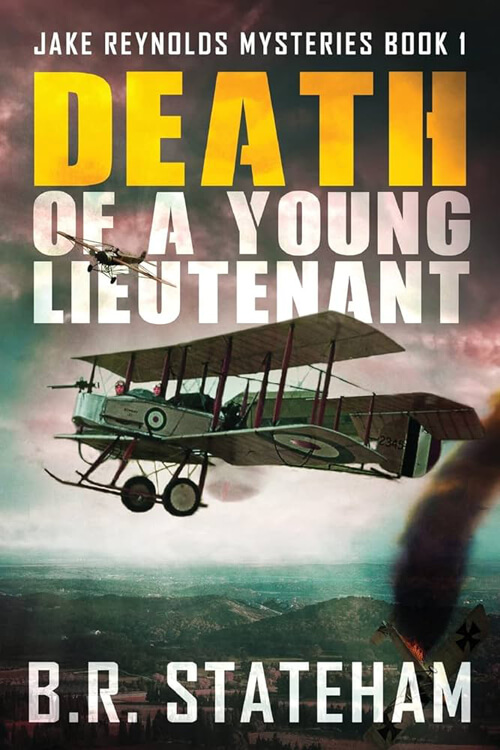
On the Edge of the Arctic or, An Aeroplane in Snowland
This story, an account of the peculiar and marvelous adventures by which two Canadian boys—Norman Grant and Roy Moulton—achieved sudden fame in the Arctic wilderness of the great Northwest, began in the thriving city of Calgary. The date was the big day of the celebrated “Stampede,” Calgary’s famous civic celebration. In July, among the many events that had drawn thousands of people to the new Northwestern metropolis, Norman and Roy were on the program as aviators and exhibitors of their new airplane.
These young men were born in Calgary and had lived eighteen years in that city. Since this almost covered the period of Calgary’s growth from a trading post to a modern city, each young man had a knowledge of the wilderness and its romance that other boys could get only from history. This meant they knew plainsmen, scouts, ranchmen, cowboys, hunters, trappers, and even Indians as personal friends. It also meant they had a fundamental knowledge of the prairies, the woods, and mountains. Their knowledge of these men and the land they lived in was personal and did not come from the fanciful narratives of books of adventure.
Each boy was the son of a mechanic, a man who had entered the Province of Alberta with the first railroads. And each boy was educated in all that a grammar school affords. The picturesque romance of the Northwest has been a part of their lives. It might have been supposed that the ambitions of the two lads would have run toward mining or ranch life or even the inviting work of hunters or trappers.
To the gratification of their fathers, however, they fell in with the modern movement and turned toward mechanics. When the furor for aeronautics reached even far-away Calgary, the boys found themselves passionately absorbed in all airship discoveries. Mr. Grant’s position as a division mechanic of an excellent trunk railroad and Mr. Moulton’s “Electrical Supply Factory” gave the boys their starting point. Later, in Mr. Moulton’s factory, an outbuilding was appropriated, and in this place, with the approval and assistance of their fathers, the two boys finally completed an airship. This was but a spur to a renewed effort, and within a year, the boys attending school finished their improved airplane. It was named the “Gitchie Manitou” or “Spirit of the Wind”—words taken from the Cree Indians.
The original ideas that resulted in this ingenious contrivance came mainly from the boys. Yet they neglected no suggestions they could find in the latest aeronautical journals. This incredible machine was only locally known, but when the citizens of Calgary planned their local celebration, known as the “Stampede,” there was knowledge among the promoters of the just-completed “Gitchie Manitou.” It was fitting that this modern invention should be shown in contrast with all that was being collected to exhibit the past, so an arrangement was made with the young aviators to give a daily flight in the new airship.
Read or download Book
Harry Lincoln Sayler
Harry Lincoln Sayler (1863–1913) was a newspaperman and novelist under his name and pseudonyms, and he was also a ghostwriter for a widespread youth fiction series.
Sayler graduated from DePauw University. He married June Elliott of Shelbyville, Indiana, in 1889. They had two children. By occupation, Sayler was a newsman, starting in 1886 in Indianapolis. By 1889, he was working in Chicago, eventually becoming general manager of the City News Bureau of Chicago. Sayler was interested in history and became a member of the Illinois State Historical Society, the Chicago Historical Association, and the Louisiana Historical Association. He developed expertise in the subject of pirates.
Sayler wrote three juvenile fiction series relating to the then-novel technology of airplanes and flight. He wrote the Boy Scouts of the Air series under the pen name Gordon Stuart, the Aeroplane Boys series as Ashton Lamar, and the Airship Boys series under his name.
Sayler also wrote for another juvenile series, the Boys’ Big Game series, under the pseudonym Elliott Whitney.
Works
Boy Scouts of the Air series
Stuart, Gordon (1912). The Boy Scouts of the Air at Eagle Camp. Chicago: Reilly & Britton.
Stuart, Gordon (1912). The Boy Scouts of the Air at Greenwood School. CIHM/ICMH Microfiche series = CIHM/ICMH collection de microfiches ;no. 79277. Chicago: Reilly & Britton.
Stuart, Gordon (1912). The Boy Scouts of the Air in northern wilds. Chicago: Reilly & Britton.
Stuart, Gordon (1912). The Boy Scouts of the air in Indian land. Chicago: Reilly & Britton.
Stuart, Gordon (1913). The Boy Scouts of the Air on Flathead Mountain. Chicago: Reilly & Britton.
Stuart, Gordon (1914). The Boy Scouts of the Air on the Great Lakes (PDF). Chicago: Reilly & Britton.
The Boy Scouts of the Air at Greenwood School (1912)
The Boy Scouts of the Air in Belgium (1915)
The Boy Scouts of the Air on Lost Island (1917)
Boy Scouts of the Air with Pershing (1919)
The Boy Scouts of the Air at Cape Peril (1921)
The Aeroplane Boys series
Lamar, Ashton (1910). In the clouds for Uncle Sam or Morey Marshall of the Signal Corps.
Lamar, Ashton (1910). The Stolen Aeroplane, or how Bud Wilson made good.
Lamar, Ashton (1910). The airplane express, or the boy aeronaut’s grit.
Lamar, Ashton (1910). The Boy Aeronauts Club, or Flying for fun.
Lamar, Ashton (1911). A cruise in the sky, or the legend of the great pink pearl.
Lamar, Ashton (1911). Battling the Bighorn or the airplane in the Rockies.
Lamar, Ashton (1912). When Scout Meets Scout; or, The Aeroplane Spy.
Lamar, Ashton (1913). On the edge of the Arctic: an airplane in snowland.






